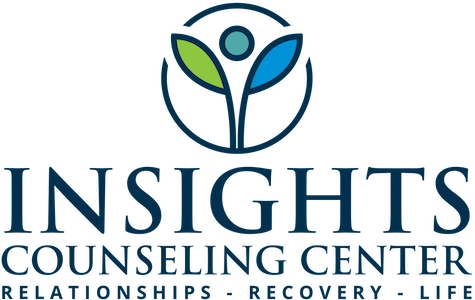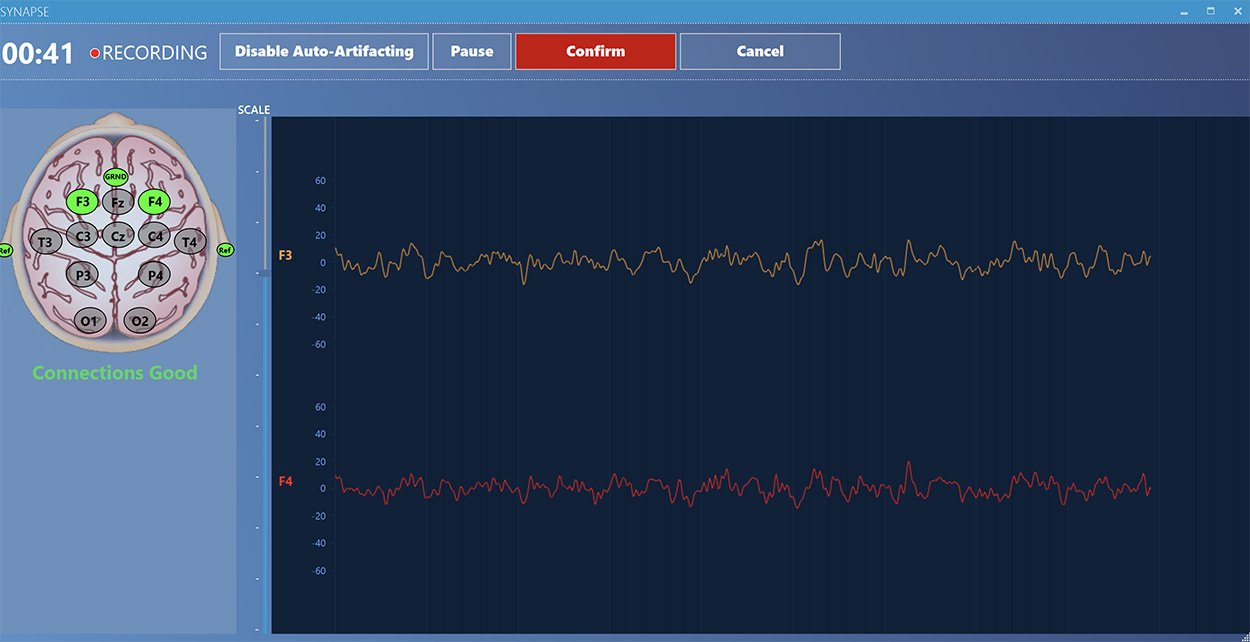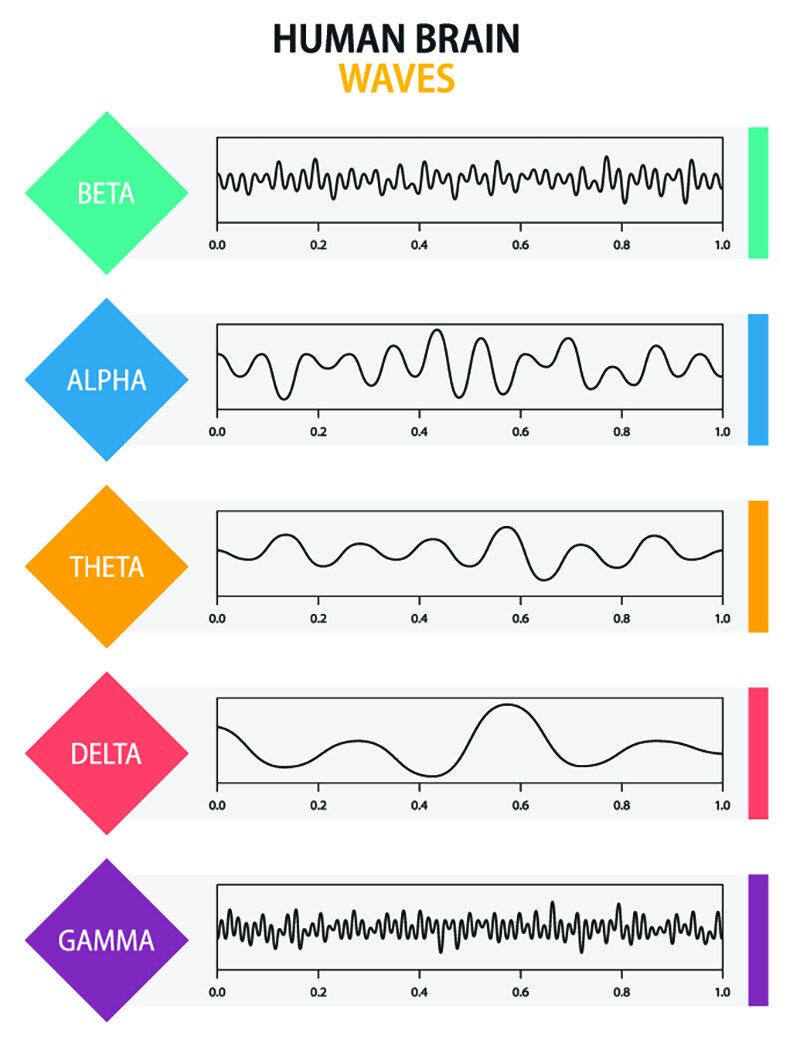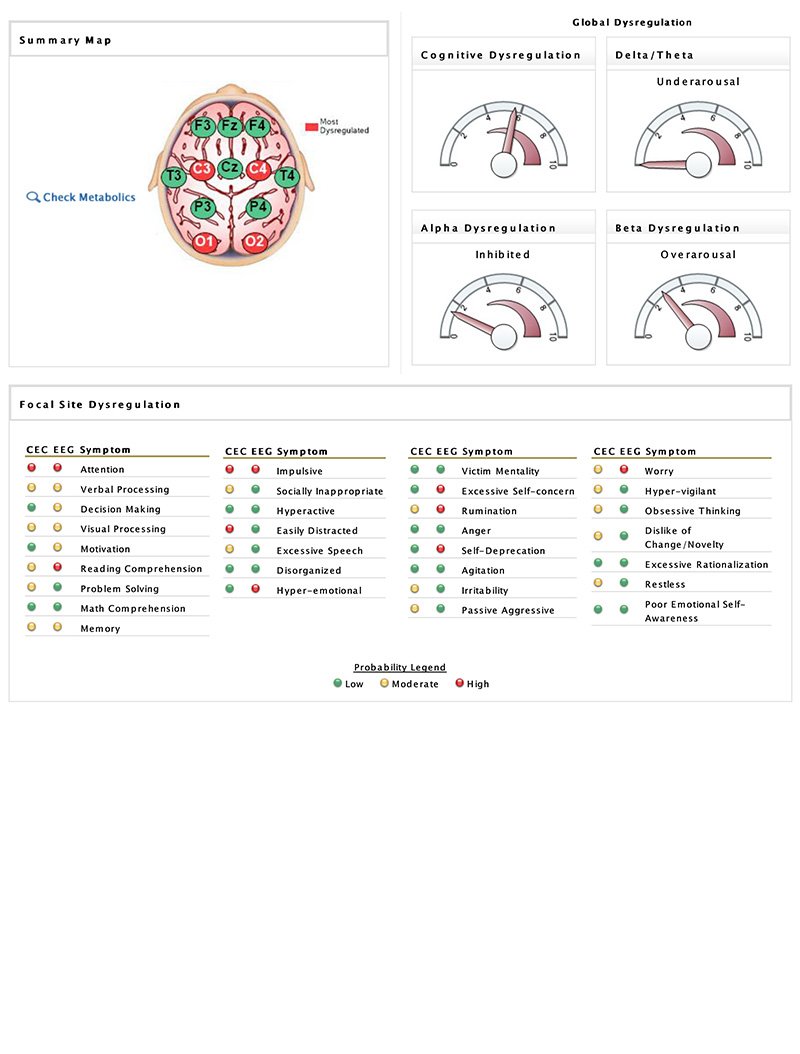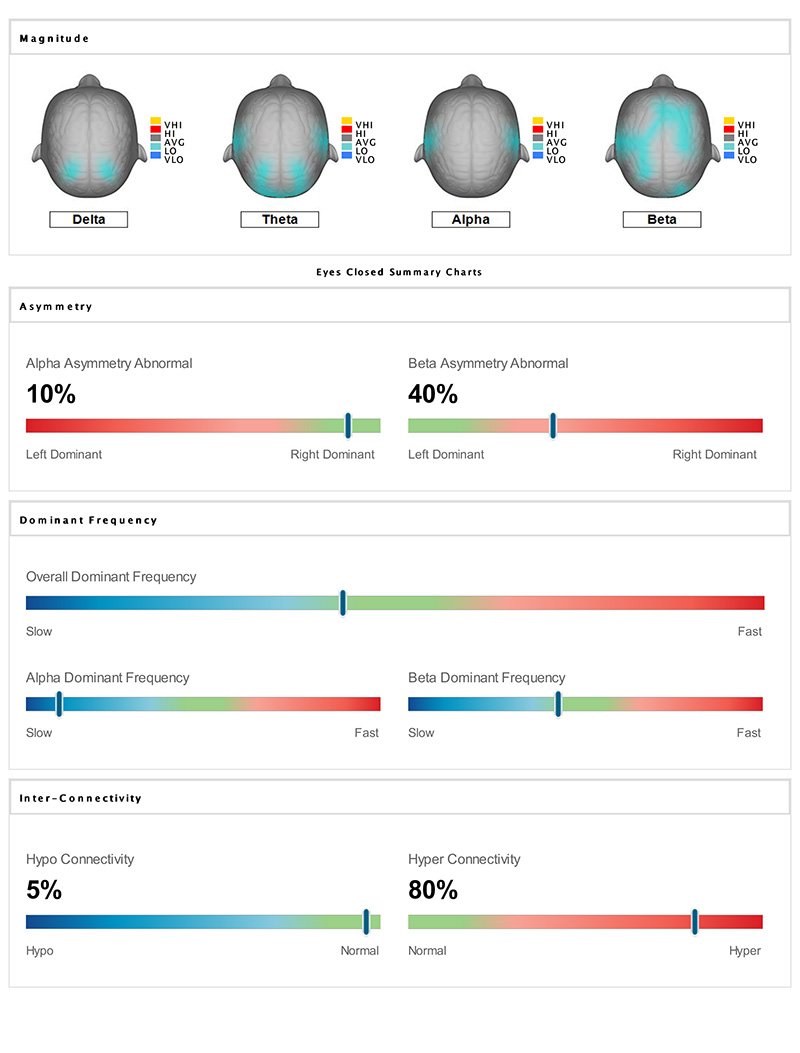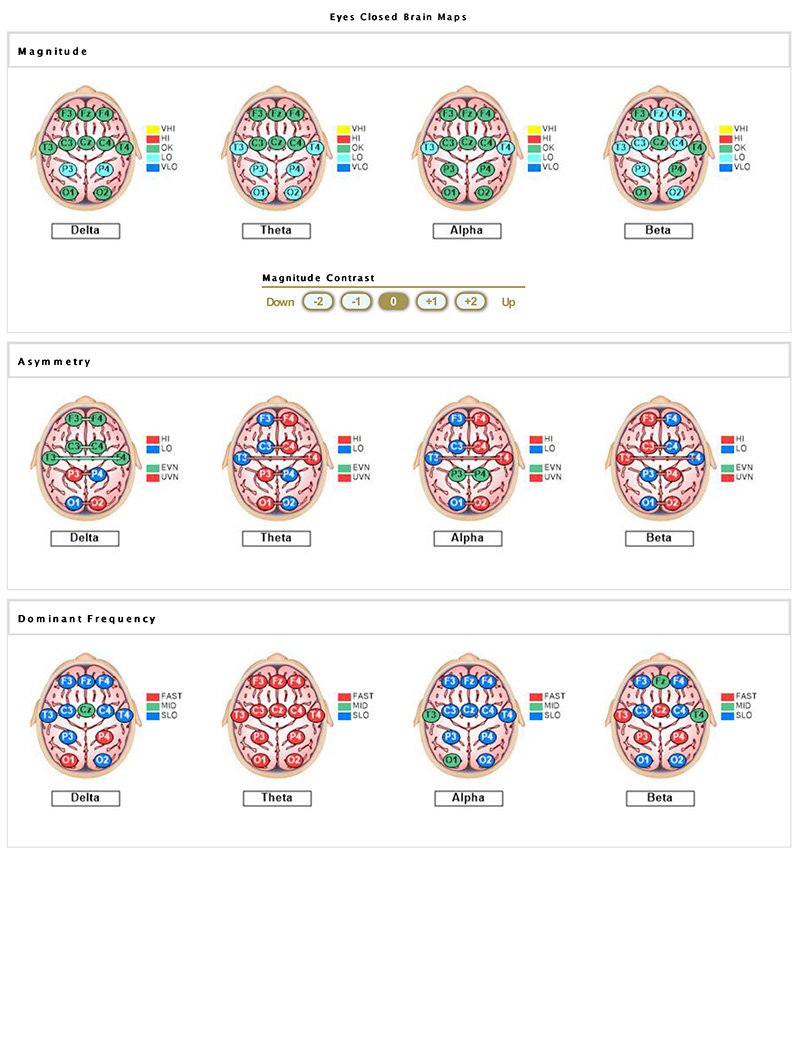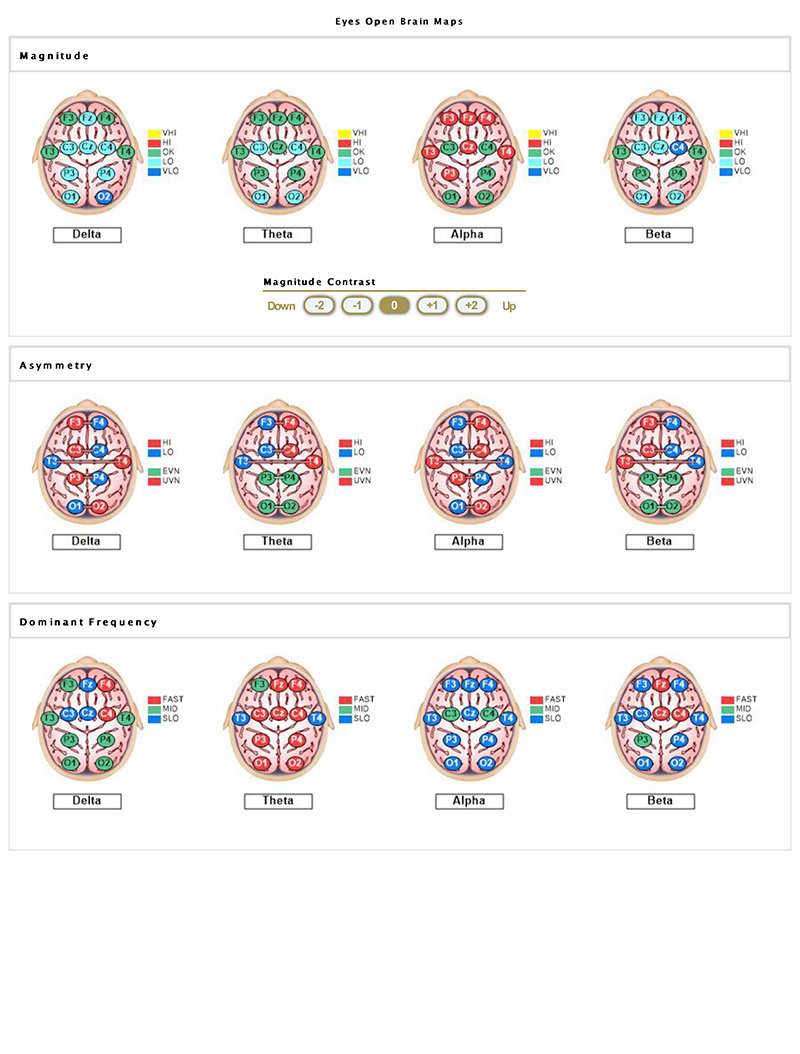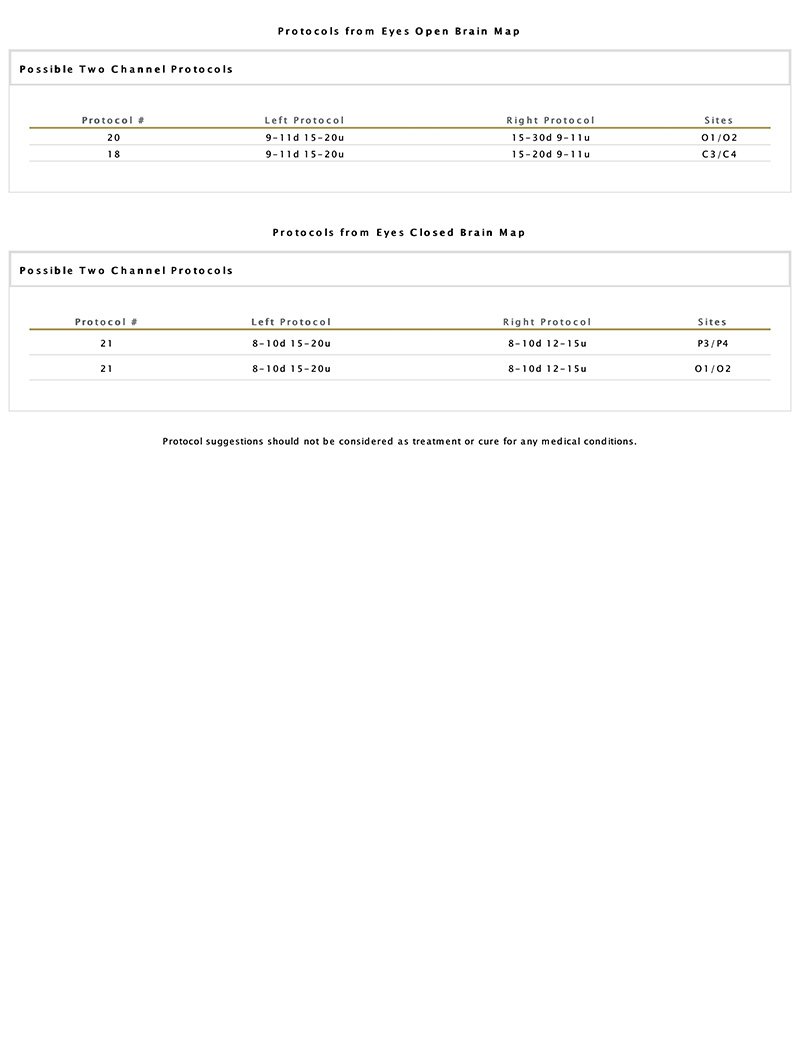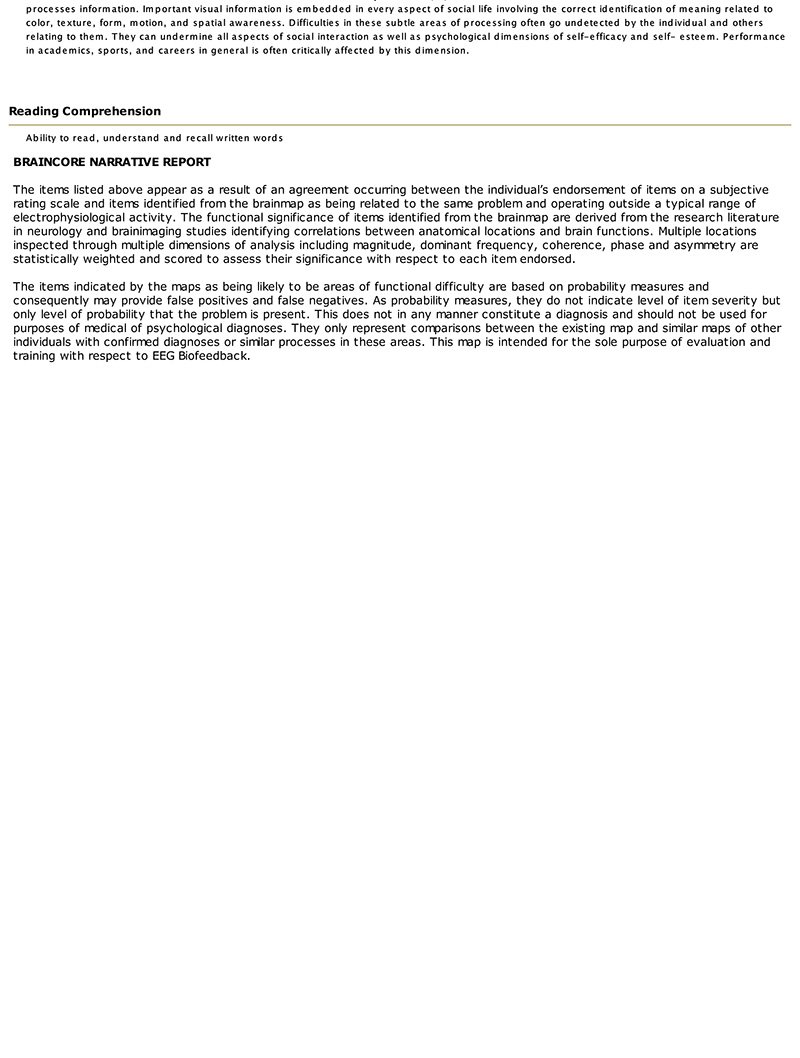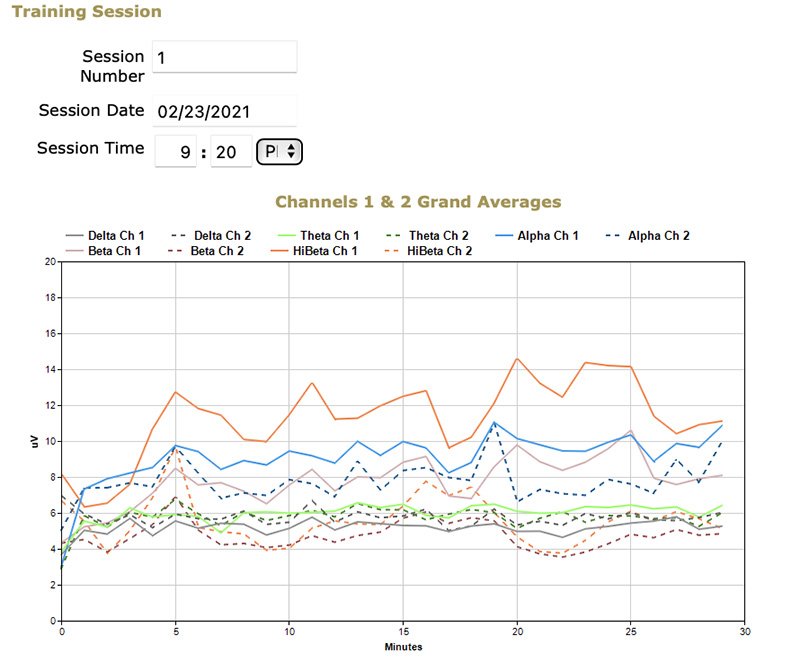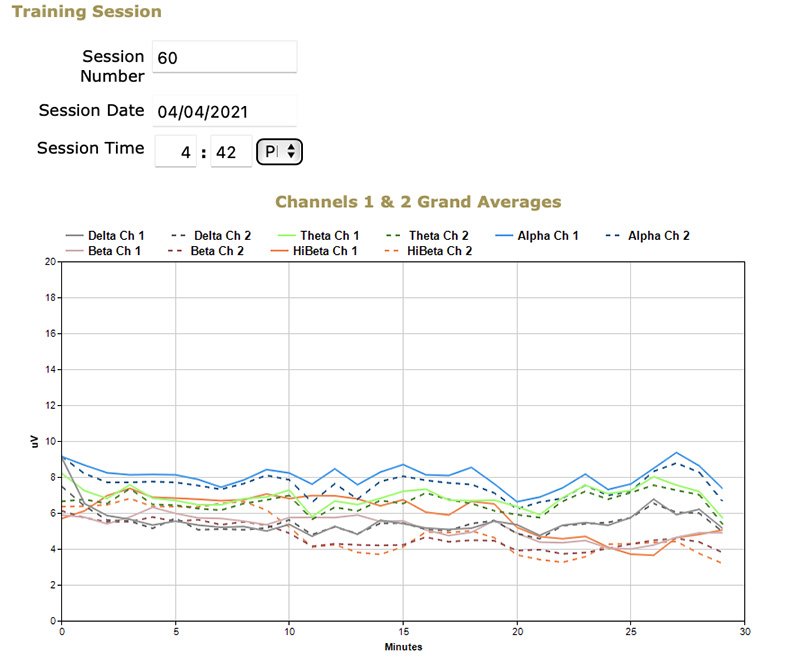What Can You Learn From A Neurofeedback qEEG Brain Map?
Have you heard about the many benefits of neurofeedback? Over the past decade or so, neurofeedback has burst onto the mental health scene and made a tremendous impact. It has proven to be helpful in treating multiple issues such as ADHD, anxiety, Autism Spectrum Disorder, depression, insomnia, learning disorders, memory loss, migraines, trauma and even addiction. It is also now being used by many professional athletes and C-Suite leaders for peak performance with promising results!
Are you curious about what is involved, and what neurofeedback might look like for you?
Here at Insights Counseling Center, we begin with a comprehensive brain map assessment that allows our therapists to determine whether brainwave patterns are different from normal. Each evaluation helps us select targeted neurofeedback training protocols specific to what is happening in your brain with the aim of returning things to normal - and to provide you relief.
EEG NEUROFEEDBACK is a
"non-pharmacological and non-invasive
method that involves training through a brain-computer interface…
a simultaneous learning process where
both the patient and computer are involved in modifying neuronal activity or connectivity,
thereby improving associated
symptoms of anxiety and/or over-arousal."¹
BRAINWAVES AND DYSREGULATION
The brainwaves measured during a brain map are measured in hertz (Hz) or cycles per second. A healthy and regulated brain can shift between fast, idle, and slow arousal states more easily as demands arise. Think about your car and how it feels when it is smoothly shifting up and down through the gears. When a brain becomes dysregulated, it becomes less efficient at shifting gears, and it may just get stuck in one gear or another.
UNDERSTANDING BRAINWAVE PROCESSING
FAST PROCESSING
Beta waves, 12-35 Hz, are associated with times when you engage with your environment or people. Using beta waves, you are awake and focused.
IDLE PROCESSING
Alpha waves, 8-12 Hz, are associated with a state of quiet wakefulness. You are awake, but you are not doing anything that requires concentration. Alpha waves help you transition between states of sleep (slow-wave processing) and states of engagement (fast-wave processing). You are likely feeling calm and relaxed when your brain produces alpha waves.
SLOW PROCESSING
Slow processing waves are Delta, 1-4 Hz, produced during deep, dreamless sleep; and Theta, 4-7 Hz, which occur during deep relaxation or a twilight state. Theta waves are associated with memory recall and creativity.
UNDERSTANDING BRAINWAVE DYSREGULATION
The following symptoms may be associated with imbalance in the following brainwaves:
DELTA/ THETA IMBALANCE
Cognitive Impairment
Impulsivity
Hyperactivity
Focus and Attention Issues
ADHD
Socially Inappropriate
Easily Distracted
Excessive Speech
Disorganized
Hyper-emotional
Traumatic Brain Injury
Dementia
Learning Disorders
Autism Spectrum
ALPHA IMBALANCE
Depression
Victim Mentality
Excessive Self Concern
Passive Aggressive
Irritability
Avoidance Behavior
Rumination
Anger
Self-Deprecation
Agitation
Fibromyalgia
Withdrawal Behavior
BETA IMBALANCE
Anxiety
OCD
Migraines
Tension Headaches
Insomnia
Obsessive Thinking
Excessive Rationalization
Poor Emotional Self-Awareness
Panic Attacks
Worry
Chronic Pain
Hyper-Vigilant
Dislike Change
Restless
THE qEEG BRAIN MAP & REPORT OF FINDINGS
Electroencephalography (EEG) measures electrical patterns on the scalp's surface to reflect cortical activity. The data is then compared against a clinical and normative database to provide quantitative results (qEEG) and suggest specific training protocols. Our neurofeedback mapping and training are all-natural and never use a stimulus. You may have heard about microcurrent neurofeedback. That type of neurofeedback electrically stimulates regions of the brain to effect change. Our neurofeedback systems never put any electricity into your body - our neurofeedback is completely non-invasive
A therapist will explain your report of findings. The map report of findings suggests global areas of dysregulation, and we can see probability measures of focal site dysregulation as shown in the following sample.
NEUROFEEDBACK TRAINING
This individual completed 60 neurofeedback training sessions from February 23, 2021 to April 5, 2021.
A therapist sees your training results daily and updates you weekly during home training. We are watching for the convergence of the brainwaves, where each brainwave's left and right channels converge together and form a single solid line on the map. We also look for layering and normalization, where the brainwaves order themselves from slowest to fastest. We aim for delta brainwaves to be at 12 microvolts or less, theta at ten microvolts or less, alpha at eight microvolts or less, and beta waves at six microvolts or less. Training protocols are monitored and adjusted as needed during home training.
If you would like a brain map to better understand the symptoms you are experiencing or consider neurofeedback training, please reach out here on our contact page.
¹ Micoulaud-Franchi, Jeunet, C., Pelissolo, A., & Ros, T. (2021). EEG Neurofeedback for Anxiety Disorders and Post-Traumatic Stress Disorders: A Blueprint for a Promising Brain-Based Therapy. Current Psychiatry Reports., 23(12). https://doi.org/10.1007/s11920-021-01299-9
